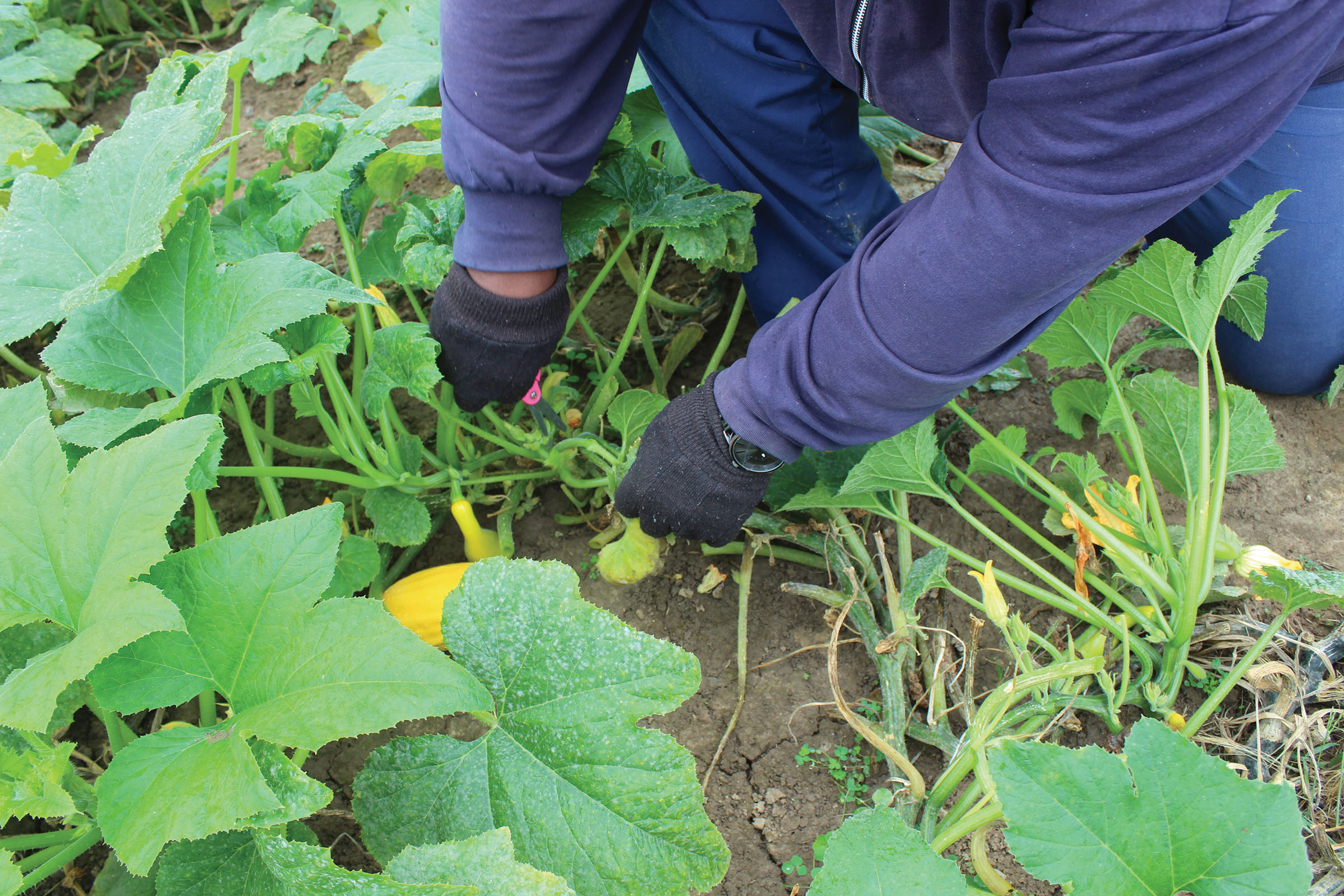
GRAFTON, Ohio — When Antoine was a boy, he wasn’t particularly interested in helping his grandparents with their garden. Later on, after he was incarcerated at the Grafton Correctional Institution, he couldn’t understand why other incarcerated men would spend their free time working in the garden inside the facility.
Now, Antoine explains, he’s come to see gardening differently. Vegetables from the GCI garden are donated to area charities and he likes being able to help hungry people. “It’s a cause that’s so much bigger than myself,” he said.
People who are incarcerated might feel like they have a world of problems, but one thing they don’t have to worry about is food, Antoine said.
“There are people out there who are free and they’re all locked up. They don’t even got a way to eat.” Working in the garden is a way for him to give back to society, he added. “To be able to be in this environment and help somebody right where I’m at, that’s a blessing within itself.”
Antoine, who is being identified with only a first name at the request of corrections department officials, is one of 24 men incarcerated at Grafton who work in the garden. The project started in 2020 during the COVID pandemic.
Background
Officials from the prison contacted the Catholic Diocese of Cleveland asking for ideas for community service projects, said Sister Rita Mary Harwood, who has worked with the diocese to coordinate ministry for men at the prison since 1997. “They were looking for something meaningful they could provide for the community during the pandemic.”
First, the diocese suggested that the incarcerated men sew masks for Catholic Charities employees, volunteers and clients. They turned out 49,000 masks, Sister Rita Mary said, but the men still wanted to do more. Planting a garden to supply food charities was the next step. “We didn’t want the project to stop,” she said.
The project is supported by many volunteers from Catholic Charities who pick up vegetables twice a week, Sister Rita Mary said. They deliver the vegetables to the Bishop Cosgrove Center in Cleveland and the St. Elizabeth Center in Lorain.
‘Truly a blessing’ Eric Milkie, program director with Catholic Charities, has been overseeing the distribution of the vegetables.
“It’s really, truly a blessing for us,” he said.
His budget is tight and demand for food programs has been growing. The Bishop Cosgrove Center and the St. Elizabeth Center served about 100,000 hot meals last year but they expect to serve about 175,000 this year. Besides using the vegetables for the meal programs, Catholic Charities distributes them throughout the area to food pantries.
The vegetables are a welcome addition to packaged foods, Milkie said. “People love getting fresh produce.”
Boyert’s Greenhouse in Medina has been a strong supporter of the program, supplying the vegetable plants and seeds for the garden, said Sister Rita Mary. The program couldn’t exist without the support of the GCI officials, she added. “Not every place is like that. I give a lot of credit to the warden and the administration,” she said.
In the first year, the GCI garden contributed 1,300 pounds of vegetables to hunger charities. The project has grown every year and by mid-September this year’s donations had already reached 14,500 pounds, according to Richard, who organizes the garden work at GCI.
“We’re going to hit 15,000,” he predicted, gesturing toward the tangles of squash vines and neat rows of eggplants and Brussels sprouts still to be harvested.

Finding meaning
Richard, who has been incarcerated for 30 years, is also a seminary student who expects to graduate next fall. He said he took on management of the garden to serve others. “It was just the heart to want to be a part of good energy,” he said.
Working in the garden can help incarcerated men to find freedom within themselves, Richard said.
“I figured out how to cope with life, growing up in here. I’ve been in here 30 years and I’ve realized to become free isn’t when you go out the front door. You’ve got to be free in here,” he said.
The garden helps combat the negativity and bitterness some of the men experience, he said. “That’s what this was for me, just a tool to help people, both in society and the men in here.”
This year’s garden plot was just over an acre, but Richard pointed out strips of sod that have been turned up along the edge of the garden to expand the growing area. Next year he is planning for 1.14 acres.
“I’ll turn this whole place into a garden if they’ll let me,” he said.
In the meantime, the gardeners have been tending the last of the late-season crops. Harvesting food is the most gratifying part of working in the garden, said Dave, who volunteered in the garden for the second season this year. It also brings back childhood memories for him.
“I remember how it was being with Mom in her garden,” Dave said. “It’s kind of reflective therapy.”
Now, Dave is looking forward to the day when he can grow a garden with his eight grandchildren.
“I’m getting the experience I need to know what it is I have to do once I do get that opportunity,” he said. “Someday soon. Someday soon I’ll be able to show them the ropes.”













This article was excellent. Just full of unknown facts, compassion and understanding. Thank you.
Wouldn’t it be wonderful if our U.S. prison systems could unite for a truly great cause and ALL have gardens with this same or similar purpose? Here’s a simple solution to a common problem in EVERY state. What I am also reading between the lines is that this is a mental health benefit; when a man leaves his incarcerated life he is in a better place psychologically. He is better able to join in the world beyond bars.